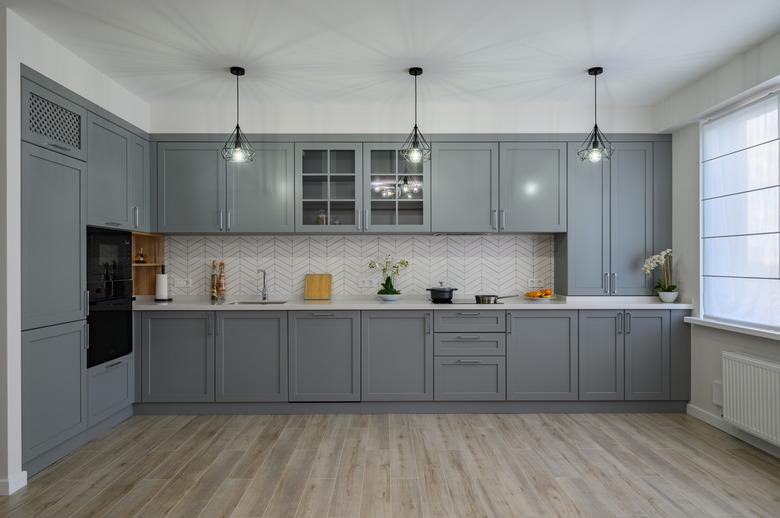How To Repair Kitchen Cabinet Doors With Particleboard Swelling
One of the main weaknesses of particleboard is its vulnerability to moisture. When exposed to water during a flood, a plumbing accident or even as a result of high humidity, its individual wood chips swell and separate from each other. Like Humpty Dumpty, there's no way to put it together again. MDF, which is technically fiberboard, not particleboard, is slightly more moisture-proof, but it can also swell. When it does, it will never un-swell.
When to Replace Cabinet Doors
When to Replace Cabinet Doors
Both materials are commonly used for budget cabinets and are typically covered with plastic, wood or laminate. When the core material in one or more cabinet doors swells, you may be able to salvage the door, depending on the extent of the swelling. If it's fairly minor, one of three strategies might work. If the swelling has progressed to the point that the material has started to separate or mold has started to grow, you're better off replacing the affected particleboard cabinet doors.
Remove the Laminate and Sand
Remove the Laminate and Sand
When particleboard swells, the laminate usually begins to lift, and that gives you a good head start for this strategy. A sample particleboard cabinet makeover would look like the following:
- Take the door down and dry it thoroughly, using heat if necessary.
- Pull off the laminate slowly and carefully, using a heat gun or a syringe filled with lacquer thinner to soften the adhesive and a sharp knife to cut through the adhesive bonds. You don't have to remove the laminate completely to make a small repair, but you do if the swelling affects the entire door.
- Sand down the swelled particleboard, using a pad sander and 100-grit sandpaper.
- Apply contact cement to the flattened particleboard and the back of the laminate and let it set for five to 10 minutes.
- Press the laminate into place and clamp it down with C-clamps. Leave it clamped overnight.
Applying Laminate to Particleboard Cabinet Doors
Applying Laminate to Particleboard Cabinet Doors
A second strategy works best if the swelling mostly affects the back of the cabinet door. Take the door down, dry it completely, then go ahead and sand over the existing laminate. When the back of the door is completely flat, glue on a new sheet of laminate. This is an easy fix for particleboard storage cabinets, which don't have to look as good as kitchen cabinets.
Sand the Doors and Paint
Sand the Doors and Paint
A third way of dealing with water-damaged particleboard cabinet doors is simply to paint them. If you choose this option, you may also want to paint the cabinets themselves, but you don't have to. Painted doors on a laminate cabinet can look attractive enough to be a design feature.
While any kind of paint will adhere, provided you first apply a coat of high-solids primer — which is a must — the best kind is a water- or solvent-based enamel with a high gloss, which is easy to keep clean. You can apply it with a brush or by spraying.
The doors must be dry, so take them down and apply heat if necessary to make sure all the moisture has evaporated from the particleboard core. Re-glue any lifting laminate with contact cement, then sand the entire door flat with a pad sander. Tack off sanding dust, apply a coat of primer and then at least two top-coats of paint, then give the paint at least 24 hours to dry before re-hanging the doors.
